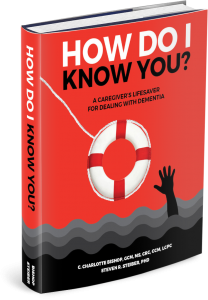 Well, first of all, the basics keep changing, but we try to regularly update you on what we know about the most common dementia, Alzheimer’s Disease. It is especially appropriate given that November is coming up; it’s Alzheimer’s Awareness Month.
Well, first of all, the basics keep changing, but we try to regularly update you on what we know about the most common dementia, Alzheimer’s Disease. It is especially appropriate given that November is coming up; it’s Alzheimer’s Awareness Month.
Alzheimer disease (AD) is not going to just go away. In fact, the estimates from the Alzheimer’s Association tell us that its prevalence will increase from the current 5+ million cases diagnosed in America today to as many as 16 million cases by 2050. Who will be in this category of 16 million people with diagnosed Alzheimer’s Disease? Well, age is still the big predictor with the prevalence among 82+ year olds being exceeding 40 percent. Alzheimer’s will also target those with a family history of the disease, women and people with the apolipoprotein E ε4 allele gene mutations.
There are only four medications currently approved by the FDA that can slow the disease progression, but the effect is only modest and is not long-lasting. Later this month I’ll talk about some of the efforts at better diagnosis and even some steps toward prevention. The risk factors I already mentioned are the cards a person is dealt, but there are some factors over which people have some control. In order to reduce the risk of developing Alzheimer’s Disease:
• Reduce carbohydrate intake as insulin resistance that results in type 2 diabetes also can increase the risk of Alzheimer’s Disease;
• Obesity, hypertension and metabolic syndrome predispose people to Alzheimer’s;
• Stress – especially psychological stress – and depression increase the risk;
• Sleep apnea and other disorders that interfere with normal sleep also can trigger AD;
• Alcohol and tobacco use are exacerbating factors of Alzheimer’s;
• Circulatory issues that affect the heart or the kidneys increase Alzheimer’s risk; and
• Sitting too much increases a person’s risk.
So, yes, there are some risk factors that we really can do nothing about, but if you look at the bullet points here, there is a lot we all can do to minimize our risk of developing Alzheimer’s Disease. These alone represent more than 50% of the risk that medical researchers calculate. As you have seen in our postings a number of times over the years, the two first lines of intervention that can affect any disease are diet and exercise. In some studies exercise has been shown to reduce Alzheimer’s risk by as much as 65%. Get up, get out and burn off the extra calories…and consider reducing portions while at the table. Research also points to mind-challenging games or pass times also help ward off the condition. Yes, do crossword puzzles, take classes, learn a new language, play a musical instrument or even just listen to music. Some researchers even talk about a person’s mind set when they encourage people to socially and physically engage, be mindful, be optimistic, have a purpose in life and just be active.
In addition to reducing the risk of Alzheimer’s Disease, you get the bonus of a better quality of life. Pretty good deal.
In this post and throughout the National Alzheimer’s Awareness month we will be offering a $10 discount off the  retail price of our caregiver book on Alzheimer’s Disease: “How Do I Know You? A Caregiver’s Lifesaver for Dealing with Dementia”. If you would like $10 off the Amazon price, please follow this link. And enter the discount code – ZH3VK3U6.
retail price of our caregiver book on Alzheimer’s Disease: “How Do I Know You? A Caregiver’s Lifesaver for Dealing with Dementia”. If you would like $10 off the Amazon price, please follow this link. And enter the discount code – ZH3VK3U6.
Charlotte Bishop is an Aging Life Care Advisor, Geriatric Care Manager and founder of Creative Care Management, certified professionals who are geriatric advocates, resources, counselors and friends to older adults and their families in metropolitan Chicago.



